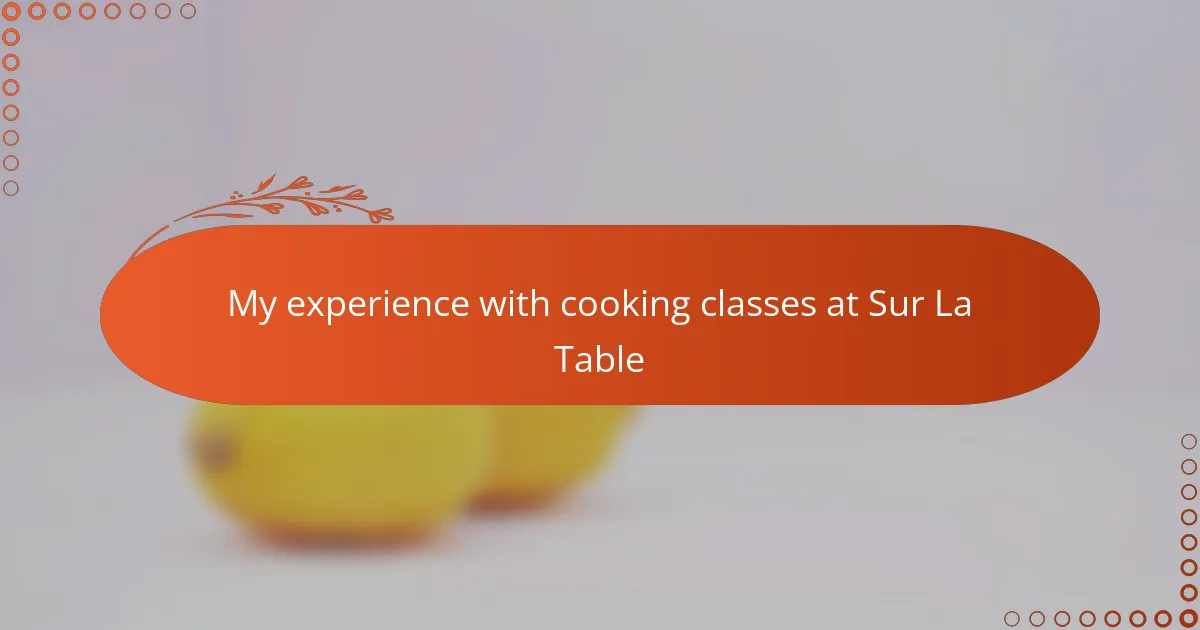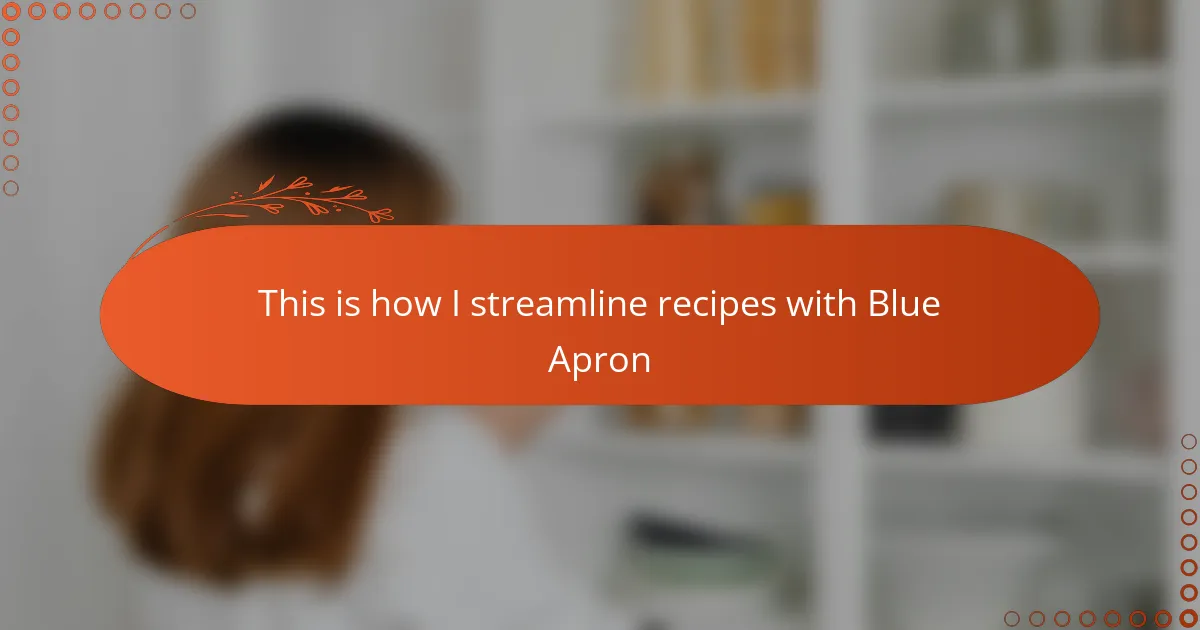Key takeaways
- Homesteading cooking emphasizes fresh, homegrown ingredients and creative techniques, fostering a deeper connection to food and sustainability.
- Sur La Table cooking classes enhance culinary skills, providing hands-on experiences that build confidence and community among participants.
- Cooking classes empower homesteaders by teaching methods that reduce waste and utilize seasonal produce effectively.
- Adapting recipes with available ingredients encourages creativity and mindfulness in the kitchen, enhancing the homesteading experience.
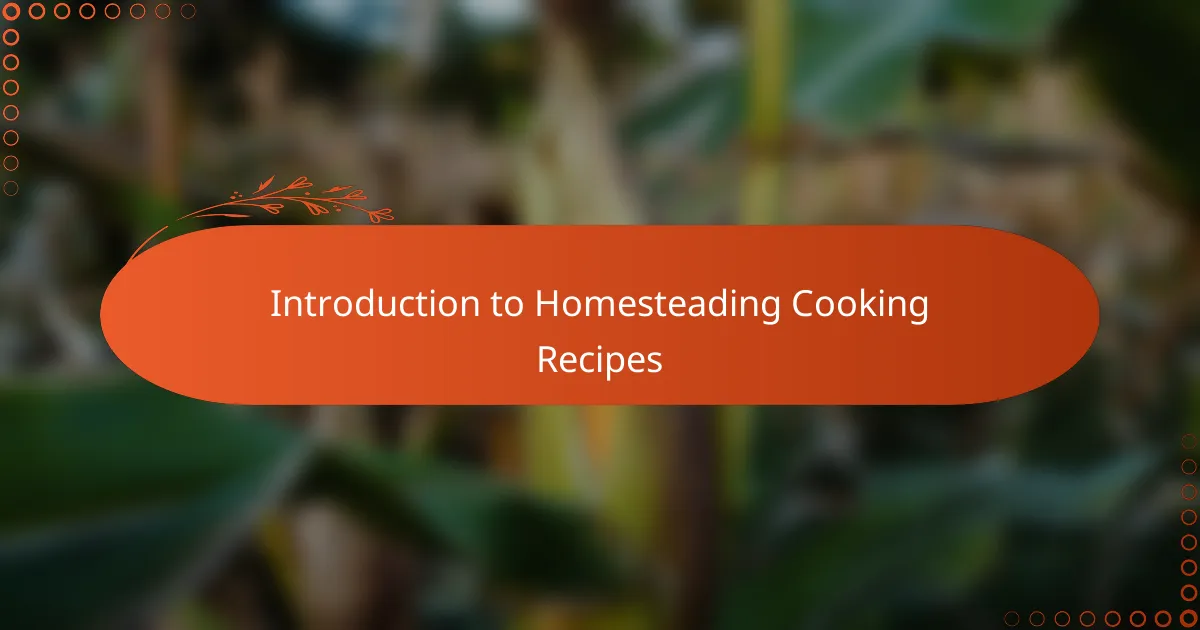
Introduction to homesteading cooking recipes
Homesteading cooking recipes have always felt like a bridge connecting me to simpler times. They emphasize fresh, homegrown ingredients and techniques that prioritize resourcefulness. Have you ever wondered how cooking from scratch can transform not just your meals, but also your entire approach to food?
There’s something deeply satisfying about turning seasonal harvests into hearty dishes. I remember the first time I used eggs straight from my backyard chickens in a recipe—it completely changed my appreciation for the ingredients. Homesteading recipes are more than instructions; they’re stories of patience, tradition, and sustainability.
These recipes invite you to slow down and savor the process. Unlike modern cooking shortcuts, homesteading meals require care and attention, which I find calming in today’s fast-paced world. Isn’t it refreshing to think about cooking as an act of love and connection rather than just a necessity?
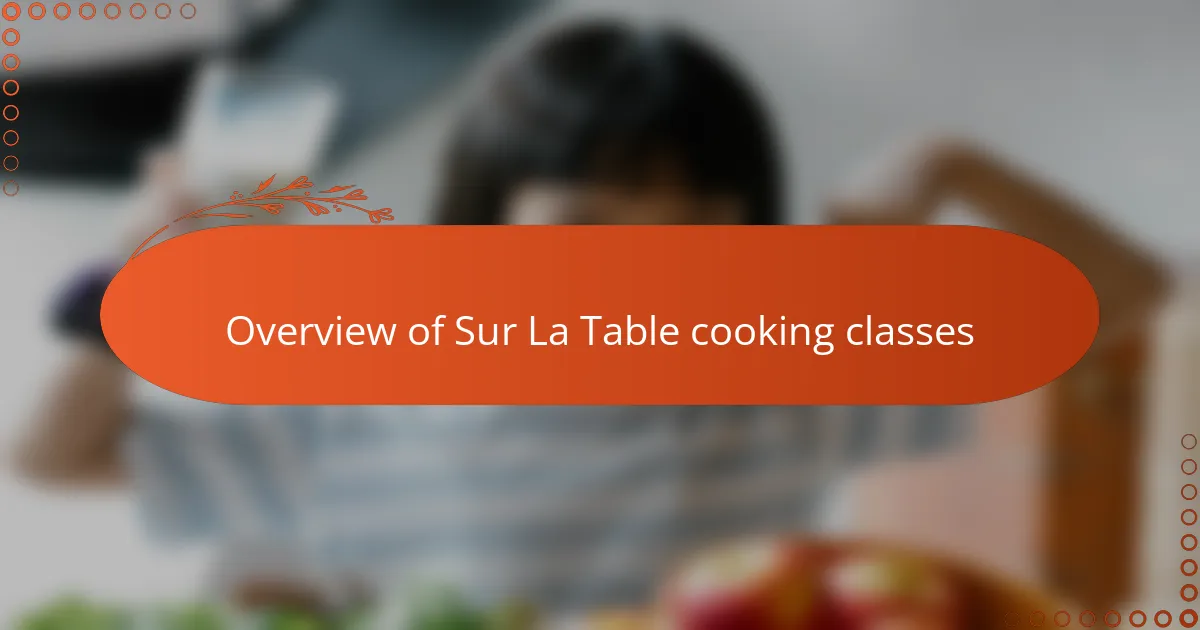
Overview of Sur La Table cooking classes
Sur La Table cooking classes offer a hands-on experience that sparked my curiosity from the moment I signed up. They focus on teaching practical skills, from mastering knife techniques to understanding ingredients, which felt like building blocks for my kitchen confidence. Have you ever left a class feeling both inspired and capable to try something new on your own?
What I appreciated most was the variety they offer—whether it’s baking bread or crafting sauces, each session is designed to be approachable but thorough. The instructors bring so much passion and knowledge, making the learning feel personal rather than scripted. It reminded me a lot of how homesteading values passing down wisdom in a warm, encouraging way.
The environment itself adds to the experience—it’s welcoming and well-equipped, which made me feel like I truly belonged there, even as a beginner. I found myself looking forward to each class, eager to see what new flavor or technique I could take back home. Doesn’t that sense of community and discovery make cooking feel more meaningful?
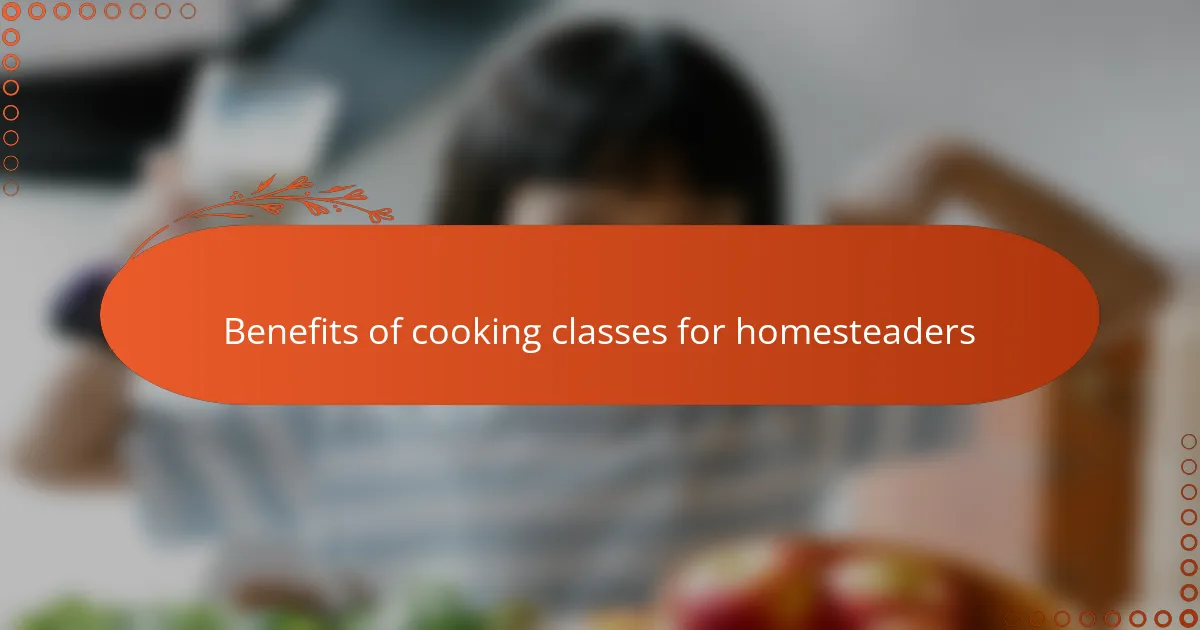
Benefits of cooking classes for homesteaders
Cooking classes offer homesteaders a chance to deepen their connection with the food they grow and raise. When I first took a class focused on preserving and fermenting, it felt like unlocking a new level of self-reliance that I hadn’t fully appreciated before. Have you ever experienced that moment when a simple technique suddenly empowers you to make the most of your harvest?
Beyond just learning recipes, these classes build practical skills that reduce waste and stretch resources—something every homesteader values deeply. For me, mastering knife skills in a Sur La Table class not only sped up meal prep but also made cooking feel less like a chore and more like a creative act. Isn’t that the kind of confidence that transforms a daily task into something joyful?
Finally, cooking classes provide a community of like-minded people who share the same passion for sustainable living. I found it comforting to swap stories and tips with others who understood the challenges and rewards of homesteading life. Have you noticed how sharing knowledge and laughter in the kitchen can turn even the simplest dish into a celebration of what you’ve grown yourself?
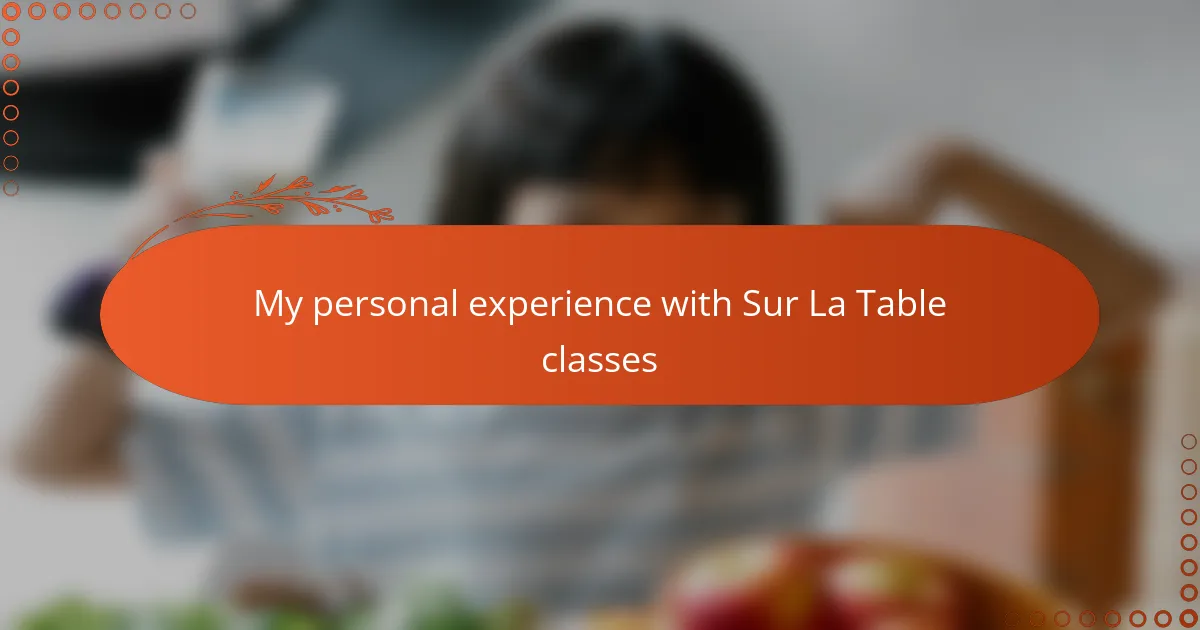
My personal experience with Sur La Table classes
I still remember the first class I took at Sur La Table—the moment I chopped my first onion with proper technique. It was strangely empowering, turning what used to be a simple chore into a skill I could rely on every day. Have you ever felt that sudden confidence when a small improvement in the kitchen changes everything?
What struck me most was how approachable the instructors made even complex recipes feel. Their patience and enthusiasm reminded me of the kind of guidance I wish more of us had when starting out. It was like having a friend who truly cared about helping me succeed.
Each session left me wanting to try the recipes at home, experimenting with fresh ingredients from my garden. The sense of community in those classes made the experience richer—sharing laughs and tips with others who love cooking felt like finding a second family. Isn’t that what makes learning both fun and meaningful?
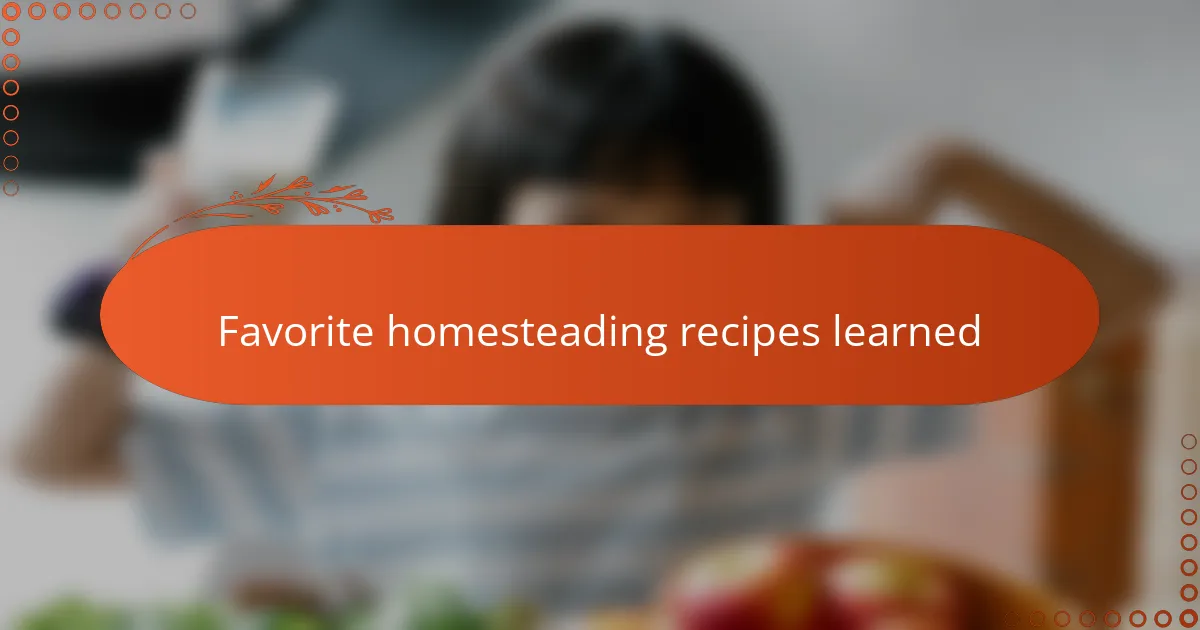
Favorite homesteading recipes learned
One of my favorite homesteading recipes I learned at Sur La Table was a rustic vegetable tart that celebrated the very essence of garden-to-table cooking. The simplicity of fresh herbs, seasonal veggies, and a flaky homemade crust reminded me how satisfying it is to let ingredients shine on their own. Have you ever tasted something so straightforward yet so deeply comforting that it feels like a warm hug from the earth itself?
Another memorable recipe was a hearty lentil stew that taught me about layering flavors while using pantry staples. It was a perfect match for chilly evenings when I wanted something nourishing without fuss. Cooking it made me appreciate how homesteading recipes stretch resources wisely, turning humble ingredients into a feast.
What really stayed with me was the class on homemade preserves—jarring fruit that I’d picked from my yard, sealing summer’s sweetness to enjoy all year. Learning how to balance sugar and acid to keep those flavors vibrant felt like holding onto a little pot of sunshine. Isn’t there something magical about bottling time, so you can savor those moments no matter the season?

Tips for applying class skills at home
Applying the skills I learned at Sur La Table felt tricky at first, especially when I returned to my humble home kitchen without the professional tools. I quickly realized that adapting techniques to what I had on hand—not every knife or pan needs to be fancy—made the process more approachable. Have you ever started a recipe and thought, “Can I do this with just my usual gear?” The answer, I found, is usually yes.
One tip that really helped me was breaking down what I learned into small, manageable steps rather than trying to master everything at once. For example, after learning proper knife skills, I practiced just slicing vegetables neatly during meal prep before attempting full recipes. This made the whole experience less overwhelming and more rewarding. Isn’t it amazing how building confidence piece by piece can change your whole outlook?
Finally, I found that recreating class recipes with my own seasonal garden produce made the lessons stick even better. Experimenting with variations based on what was fresh reminded me why homesteading cooking feels so personal and connected. Have you noticed how cooking becomes more meaningful when you put your own twist on a learned skill? It’s like turning a lesson into your own story.
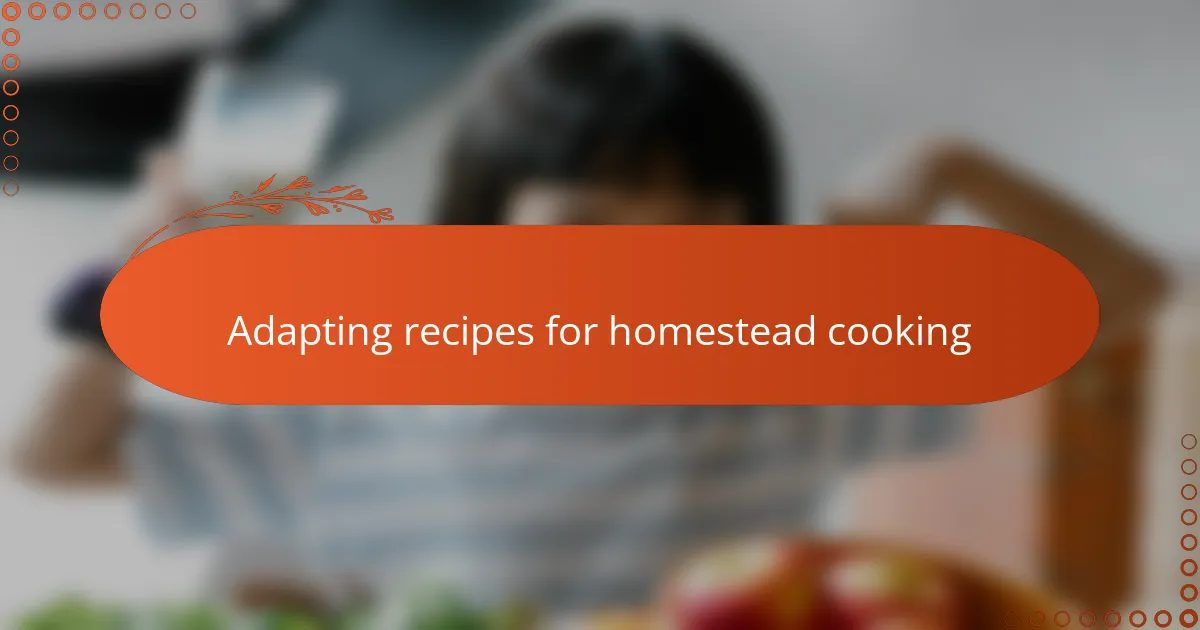
Adapting recipes for homestead cooking
Adapting recipes for homestead cooking often means embracing flexibility over strict precision. When I first tried to replicate a Sur La Table recipe using only what my homestead offered, I realized how much creativity is required—swapping out ingredients based on seasonality or what was actually available. Have you ever been surprised by how a simple substitution can lead to a whole new flavor profile that feels even more authentic?
I’ve found that scaling down or transforming a recipe to fit small-batch cooking not only reduces waste but also deepens my connection with the process. For instance, turning a larger dough recipe into just enough for a few loaves means every bite tastes like care and intention rather than convenience. Doesn’t that remind you why homesteading is as much about mindfulness as it is about food?
Sometimes, adapting recipes means leaning into traditional preservation techniques to stretch ingredients through different seasons. I remember learning how to cure and jar vegetables from a Sur La Table class and immediately thinking how perfect this skill was for my homestead pantry. Have you noticed how knowing these methods turns cooking into a thoughtful rhythm tied to the land’s cycles?
